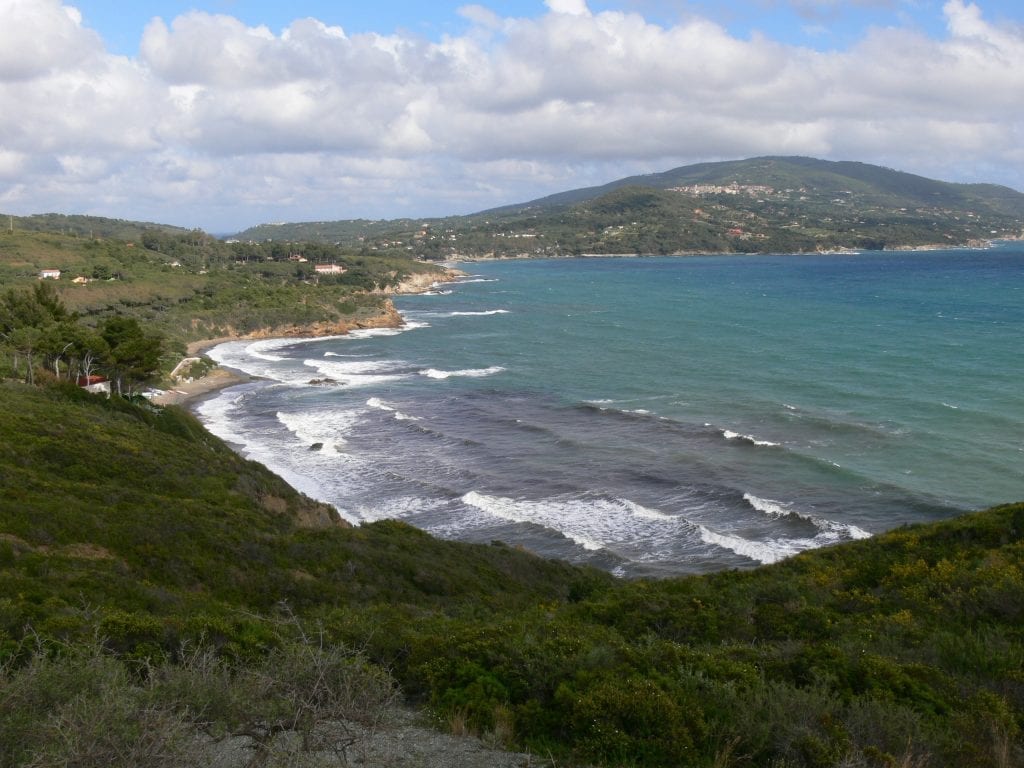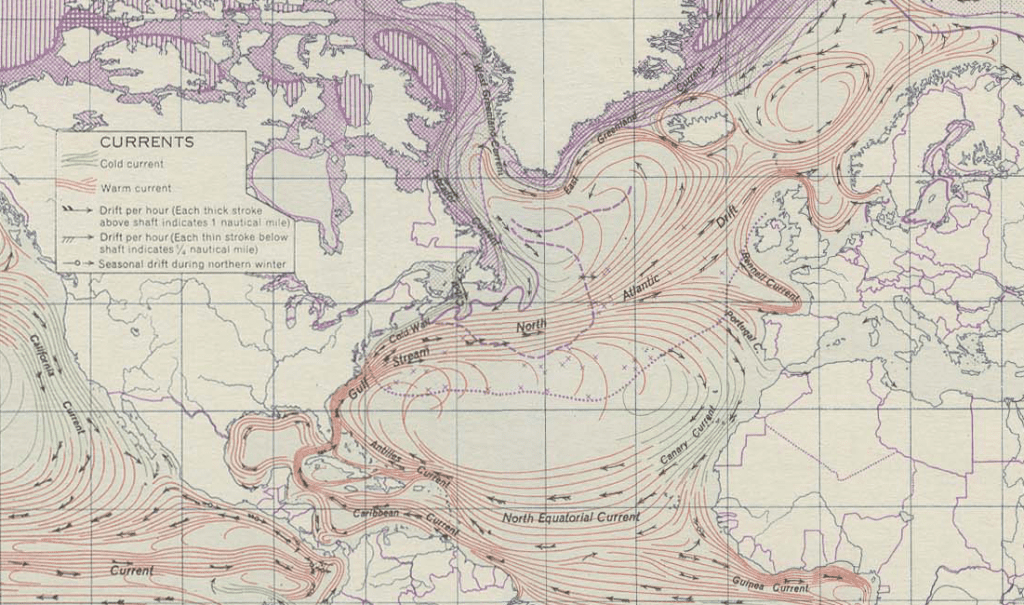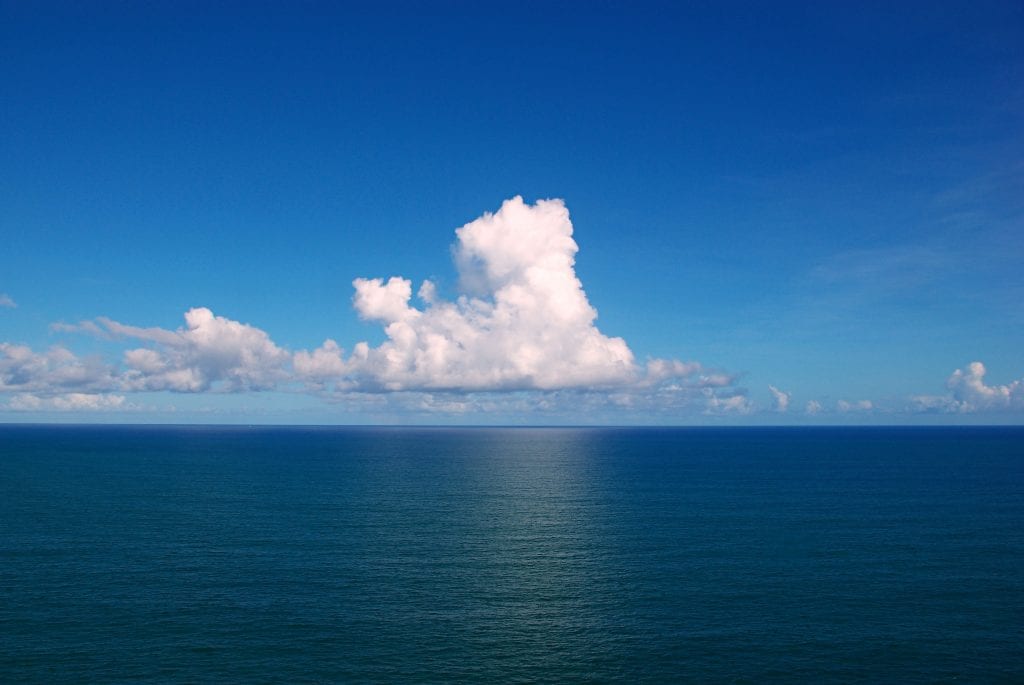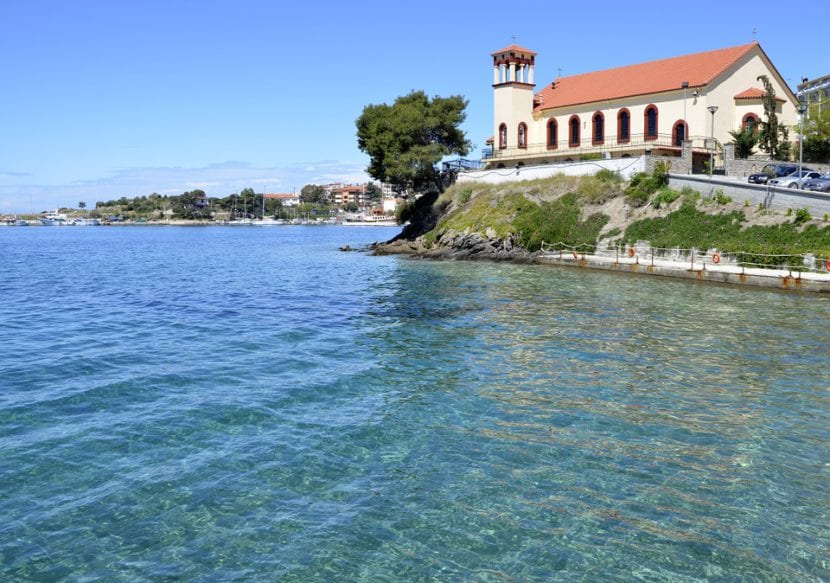
La Gulf Stream it is the ocean current that displaces a greater mass of water. It is the most important for Europeans, since thanks to it we can have a warm climate assured taking into account the latitude in which we find ourselves. But also, depending on where it passes, there will be a slightly different flora and fauna, with more arthropods on the west coast of the Iberian Peninsula than not in the north of the country, for example.
It is, therefore, a current that is very interesting to know, so we are going to do it 🙂.
What is a Gulf?

Gulf Stella (Italy)
Before getting into the subject, it is important to know what a Gulf is. Well, it's just a large portion of water that enters the earth y that is between capes. They are often confused with bays, since it is not known for sure where the border of these and the gulfs is, but it is understood that the bays are smaller.
In any case, it is a very important geographical point, since that is where ports and docks are built.
Where does the Gulf Stream pass?

This is an ocean current that originates as a consequence of the rotational movement of planet Earth, the configuration of the coasts and the terrestrial wind. It begins its journey in the Straits of Florida, and heads towards Europe, although the exact point where it ends has not yet been determined, since its completion is more or less at latitude 40ºN and 50ºW, where its warm and salty waters continue their way north in the North Atlantic current, and the Norway current, and south via the Canary Islands current.
In the North Atlantic, its waters reach Norway and Greenland, where they cool rapidly due to their proximity to the Pole. In doing so, they become denser due to their high salt content, so they sink due to the force of gravity. So, feed the thermohaline circulation that flows deeper.
What are their characteristics?

With an average width of 80 to 150km and a depth of between 800 and 1200m, its waters move at a maximum speed of 2 meters per second as it approaches shallower areas. The temperature also varies a lot in the limits due to the contact with the cold waters of the North and with the warm waters of the South. Thus, for example, in the strait that separates Florida from the Bahamas and Cuba, the surface temperature is a pleasant 25ºC, while in Norway, in the Baltic Sea, it is about 9ºC.
From its origin to the region of the Great Banks, this is a current that has a deep blue color and high salinity, but it loses it when it mixes with the North Atlantic current. Of course, its flow is impressive: in the vicinity of Ireland it is 150 million m3 / s, which makes it the most interesting ocean current in the world. To give us an idea, the flow carried by all the rivers that flow into all the rivers that flow into the Atlantic add up to 0.6 * 106 m3 / s.
Once it reaches Europe, it splits into smaller streams that have flow rates between 10 and 20 million cubic meters per second.
What are the Rings?

Image - NASA Goddard Space Flight Center
This is a current that when it has separated from the American coasts begins to flow more deeply. Thus, the cold waters separate from the waters of the Sargasso Sea, and often form meanders that can measure up to 350km. When they close on themselves they are called Rings, which reach a diameter of between 50 and 200km and can last from a month to several years. They travel a few kilometers per day, towards the West or towards the Equator.
They are very frequent phenomena in the limits of waters with different temperatures. They distribute heat and salinity from one place to another. Also, it must be said that there are Rings with cold water cores, and Rings with hot water cores. The former travel south and are deeper (between 4000 and 5000 meters), have a longer "life" period and a larger diameter.
Why is the Gulf Stream so important for Europe?

Without the Gulf Stream, Europe would not be so different from the North Pole. Of course, it wouldn't be as cold as there, but it would be quite noticeable on thermometers. Why? Because the amount of thermal energy that this current carries is proportional to its density, that is, if water is a thousand times denser than air, carries a thousand times more heat than the same volume of air. Taking into account that this current carries warm water from the tropical waters of Florida to the Old Continent, they have a very important role in the European climate.
And it is that as it approaches Europe, warm waters meet colder air. This difference in temperatures of both the sea itself and the atmosphere is what determines the climate of the place where it passes, not only in Europe, but in the world since the cold wind that comes from the West of Norway, when flowing on this current heats up Y helps stabilize the planet's temperature.
I hope you have learned more about the Gulf Stream 🙂.